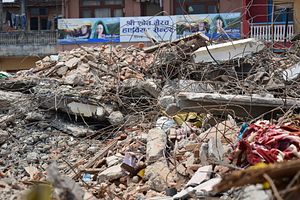Shortly after the 7.8 magnitude earthquake on April 25 that killed nearly 9,000 people, Nepal dropped off the world’s headlines quite quickly. The international media moved on to cover other disasters, of which there were plenty around the world.
Yet the disaster is not over for the 3 million affected people in Central Nepal. Nearly 700,000 homes were destroyed, most of them in remote mountain villages. The survivors have lived through four months of monsoon rains in tents and makeshift shelters. They are still waiting to rebuild more permanent homes before a bitter Himalayan winter sets in, but the government in Kathmandu has been so preoccupied with politics that its reconstruction aid package has reached none of the families affected.
Nepal’s political leaders, who have been deadlocked in negotiations over a new constitution for the past six years, were quite literally shaken up by the earthquake. Drafting a new constitution is the last remaining element in the peace process that ended the Maoist conflict in 2006.
Criticized heavily for bungling earthquake relief, the government tried to restore its image by putting constitution-writing on the “fast track.” But that effort has led to an eruption of violence, in which 40 people have been killed, over future federal demarcations, mainly along the plains bordering India. The constitution was formally adopted on September 20 despite the protests.
The earthquake has now been fully eclipsed by politics. The plight of the survivors has dropped off the headlines not just in the international media, but also within Nepal.

































